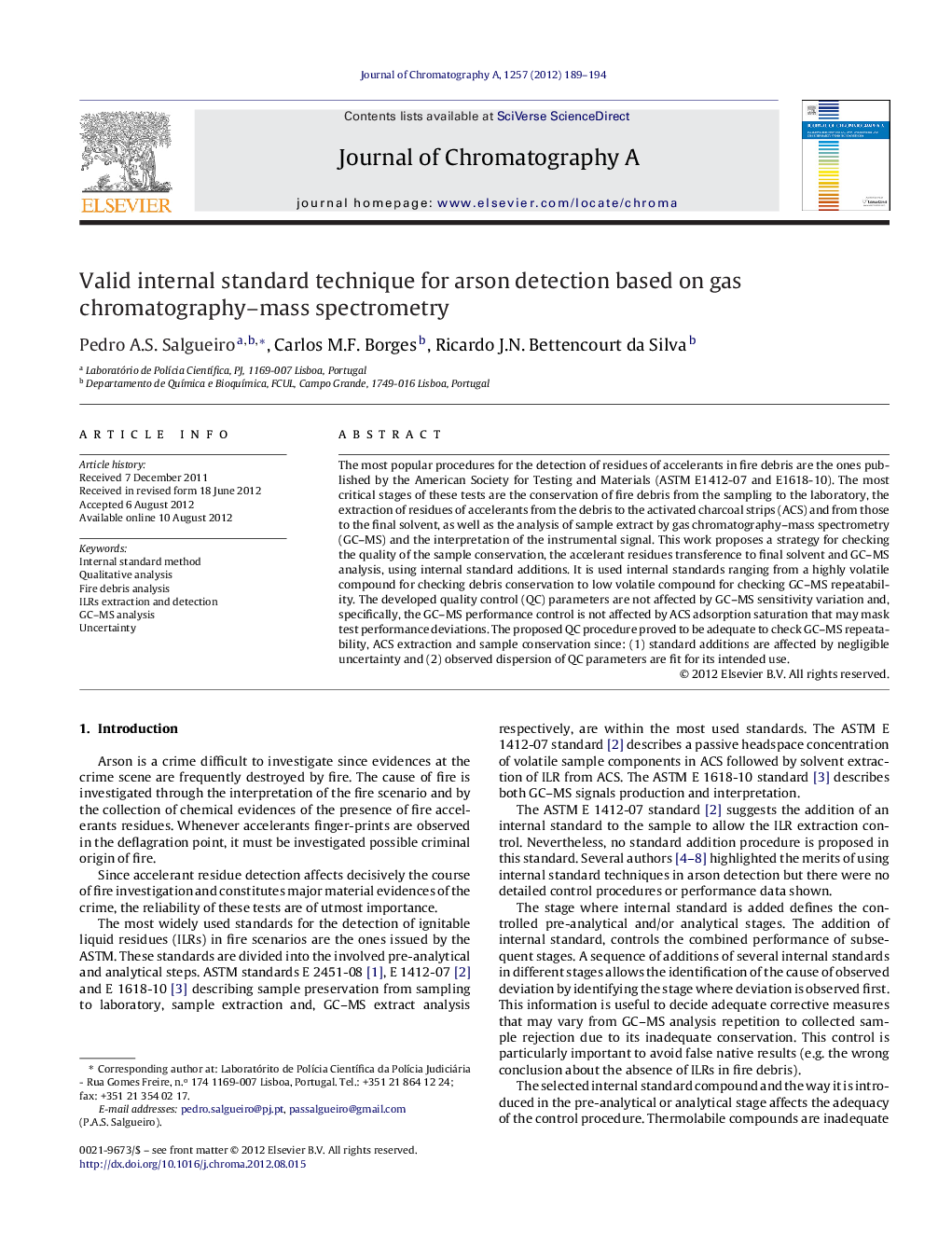| Article ID | Journal | Published Year | Pages | File Type |
|---|---|---|---|---|
| 1202025 | Journal of Chromatography A | 2012 | 6 Pages |
The most popular procedures for the detection of residues of accelerants in fire debris are the ones published by the American Society for Testing and Materials (ASTM E1412-07 and E1618-10). The most critical stages of these tests are the conservation of fire debris from the sampling to the laboratory, the extraction of residues of accelerants from the debris to the activated charcoal strips (ACS) and from those to the final solvent, as well as the analysis of sample extract by gas chromatography–mass spectrometry (GC–MS) and the interpretation of the instrumental signal. This work proposes a strategy for checking the quality of the sample conservation, the accelerant residues transference to final solvent and GC–MS analysis, using internal standard additions. It is used internal standards ranging from a highly volatile compound for checking debris conservation to low volatile compound for checking GC–MS repeatability. The developed quality control (QC) parameters are not affected by GC–MS sensitivity variation and, specifically, the GC–MS performance control is not affected by ACS adsorption saturation that may mask test performance deviations. The proposed QC procedure proved to be adequate to check GC–MS repeatability, ACS extraction and sample conservation since: (1) standard additions are affected by negligible uncertainty and (2) observed dispersion of QC parameters are fit for its intended use.
► Detection of ignitable liquid residues (ILR) in fire debris must be reliable. ► ILR are analysed by GC–MS after concentration in activated charcoal strips (ACS). ► Sequential addition of three internal standards is used to check performance. ► Methodology is robust to ACS saturation and daily GC–MS sensitivity variation. ► Valid tool for GC–MS and ACS performance check was developed.
